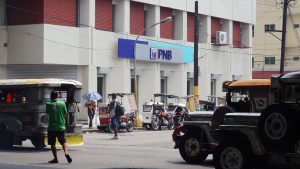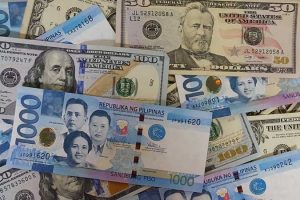Moody’s affirms PNB’s long-term debt rating

PHILIPPINE National Bank’s credit rating was affirmed at “Baa3,” with the outlook revised to “stable” from “negative.” — BW FILE PHOTO
MOODY’S Investors Service on Wednesday affirmed Philippine National Bank’s (PNB) long-term debt rating of “Baa3,” citing the bank’s improving asset quality.
The credit rater also revised its outlook for the bank to “stable” from “negative” previously. This means the rating could be retained for the next 12 to 18 months.
“The affirmation of PNB’s ratings and the outlook revision to stable from negative were driven by an improvement in the bank’s asset quality over the past 12 months,” the debt watcher said on Wednesday.
It cited the lender’s better non-performing loan (NPL) ratio this year, which stood at 6.5% as of end-June from 11.5% a year ago, as the economy further reopened and loan repayments normalized.
“Moody’s expects the bank’s asset quality to remain stable over the next 12-18 months because its legacy problem loans are largely classified as NPLs while its new loans underwriting has been conservative over the past two years,” it said.
The debt watcher added the bank’s credit strengths lie in its stable capitalization, while core profitability is also seen to improve amid better asset quality.
“PNB’s common equity Tier 1 (CET1) ratio increased to 14.5% at the end of June 2022 from 13.2% a year ago, driven by muted balance sheet growth and a reduction in NPLs. Its capital will remain stable over the next 12-18 months because its balance sheet growth will remain muted,” it said.
As of June, the lender’s capital adequacy ratio was at 15.2%, up from 14% a year ago. This and the bank’s CET1 ratio were beyond the minimum regulatory requirements.
“PNB’s core profitability is lower than its peers’ and is a key credit weakness. However, it will benefit from a normalization of credit costs, in line with the improvement in asset quality.”
Moody’s added that funding is also a credit strength of the bank. PNB’s cost of funding is comparable to the three largest Philippine banks, driven by high current and savings account deposits.
Data from the central bank showed as of end-June, the top three private banks in the country in terms of assets was BDO Unibank, Inc., Bank of the Philippine Islands, and Metropolitan Bank & Trust Co.
PNB was at fourth place with P1.2-trillion total assets as of end-June.
“PNB’s Baa3 rating is one notch above its ba1 BCA, reflecting a high likelihood of support from the Philippine government (Baa2 stable) when needed, given the bank’s high systemic importance as reflected by its market share by total assets of 5.6% as of 30 June 2022,” the debt watcher said.
According to Moody’s, an upgrade for the bank’s rating is likely in the future if asset quality significantly strengthens and if the bank’s pre-provision profitability improves.
Meanwhile, the bank’s rating could be downgraded if asset quality and capital deteriorate substantially.
PNB’s attributable net income stood at P8.24 billion in the second quarter, down by 59.42% from the P20.31 billion recorded in the same period a year ago.
This brought the bank’s attributable net earnings for the first semester to P11.04 billion, 50% lower than the P22.08 billion booked in the same period of 2021.
PNB’s shares closed at P19.80 apiece on Wednesday, up by four centavos or 0.2% from its previous finish. — K.B. Ta-asan




